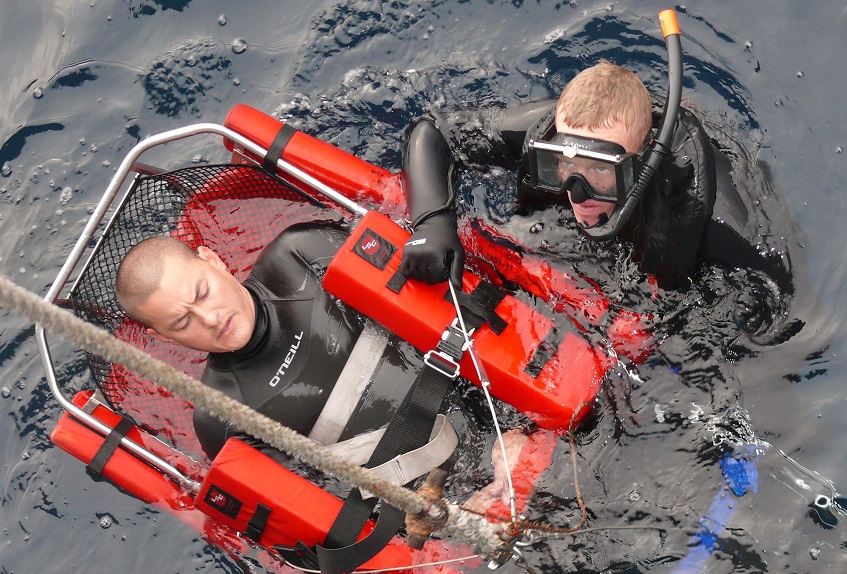
This post is also available in:
 עברית (Hebrew)
עברית (Hebrew)
First responders, soldiers, hazard material teams, etc. need hand-free communications equipment in order to be able to concentrate more on their missions. The development of a new secure communication gear that clips to your back teeth will be backed by the Pentagon. Dubbed the Molar Mic (a molar is a tooth at the back of the mouth), it’s a small device which is both microphone and “speaker,” allowing the wearer to transmit without any conspicuous external microphone and receive with no visible headset or earpiece.
Incoming sound is transmitted through the wearer’s bone matter in the jaw and skull to the auditory nerves; outgoing sound is sent to a radio transmitter on the neck, and sent to another radio unit that can be concealed on the operator. From there, the signal can be sent anywhere.
The Molar Mic connects to its transmitter via near-field magnetic induction. It’s similar to Bluetooth, encryptable, but more difficult to detect and able to pass through water.
“Essentially, what you are doing is receiving the same type of auditory information that you receive from your ear, except that you are using a new auditory pathway — through your tooth, through your cranial bones — to that auditory nerve,” said Peter Hadrovic, CEO of Sonitus Technologies.
The ability to understand conversations transmitted through bone improves with practice. “Over the period of three weeks, your brain adapts and it enhances your ability to process the audio,” said Hadrovic. But even “out of the gate, you can understand it,” he said.
He declined to say whether CIA operatives had used the device in intelligence gathering. But the Molar Mic has seen the dust of Afghanistan and even played a role in rescue operations in the United States.
In Aug, 2016, the company was introduced to the Defense Innovation Unit Experimental, or DIUx (since rebranded simply DIU), and to pararescuemen who airdrop behind enemy lines to rescue downed aircrews. A few of the airmen took prototypes of the device on deployment to Afghanistan. Although they didn’t use it during missions, they were able to test it repeatedly and offer feedback.
The Molar Mic was also tested during the rescue operations for Hurricane Harvey in the US. Hadrovic said the airmen were pleased with its performance during complicated operations involving water, helicopters, and a lot of external noise.
The same technology holds the potential for far more rich biometric communication between operators and their commanders, allowing soldiers in the field and their team to get a timely sense of how the soldier is responding to pressure or injury, without him or her having to communicate all of that explicitly. It’s something that the military is working toward.
“As we look to the future human-machine interface… the human creates a lot of information, some of it intentional, some of it unintentional. Speaking is one form of information creation,” says Hadrovic. “Once you’ve made something digital, the information can be interspersed…We have a tremendous wealth of opportunities to communicate out of the person and back to the person, information that can be either collected from them and processed offline and given back in a nice feedback loop. What we’ve done is invested in the platform that will support these future elements.”

























